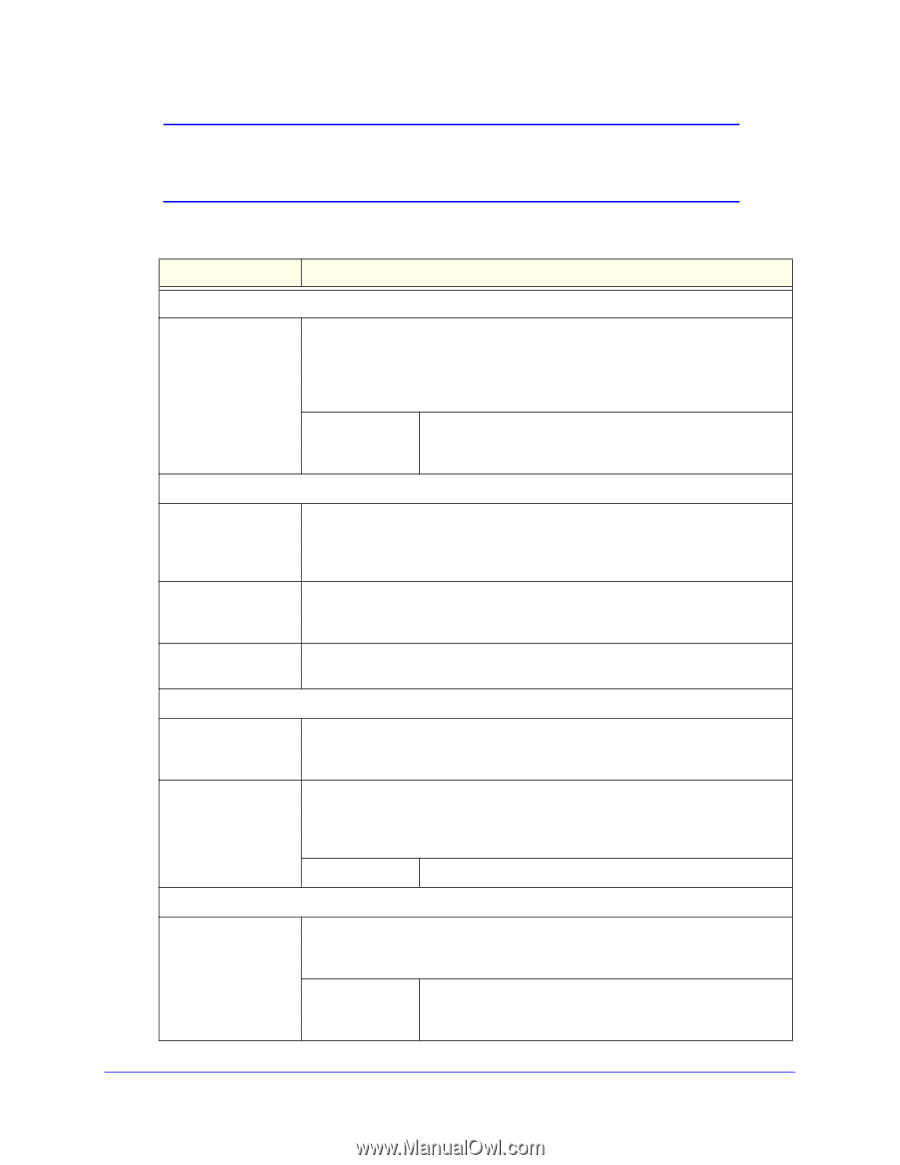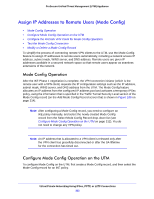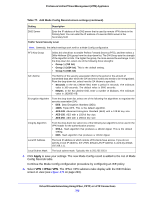Netgear UTM10EW3-100NAS Reference Manual 3.0.1-124 - Page 317
Table 78., IKE policy settings for a Mode Config configuration
 |
View all Netgear UTM10EW3-100NAS manuals
Add to My Manuals
Save this manual to your list of manuals |
Page 317 highlights
ProSecure Unified Threat Management (UTM) Appliance Note: The IKE policy settings that are explained in the following table are specifically for a Mode Config configuration. Table 72 on page 296 explains the general IKE policy settings. Table 78. IKE policy settings for a Mode Config configuration Setting Description Mode Config Record Do you want to use Mode Config Record? Select the Yes radio button. Note: Because Mode Config functions only in Aggressive mode, selecting the Yes radio button sets the tunnel exchange mode to Aggressive mode. Mode Config also requires that both the local and remote endpoints are defined by their FQDNs. Select Mode Config Record From the drop-down list, select the Mode Config record that you created in Step 4 on page 315. This example uses NA Sales. General Policy Name A descriptive name of the IKE policy for identification and management purposes. This example uses ModeConfigNA_Sales. Note: The name is not supplied to the remote VPN endpoint. Direction / Type Exchange Mode Responder is automatically selected when you select the Mode Config record in the Mode Config Record section of the screen. This ensures that the UTM responds to an IKE request from the remote endpoint but does not initiate one. Aggressive mode is automatically selected when you select the Mode Config record in the Mode Config Record section of the screen. Local Select Local Gateway Select a WAN interface from the drop-down list to specify the WAN interface for the (multiple WAN port local gateway. models only) Identifier Type From the drop-down list, select FQDN. Note: Mode Config requires that the UTM (that is, the local endpoint) is defined by an FQDN. Identifier Enter an FQDN for the UTM. This example uses router.com. Remote Identifier Type From the drop-down list, select FQDN. Note: Mode Config requires that the remote endpoint is defined by an FQDN. Identifier Enter the FQDN for the remote endpoint. This needs to be an FQDN that is not used in any other IKE policy. This example uses client.com. Virtual Private Networking Using IPSec, PPTP, or L2TP Connections 317















